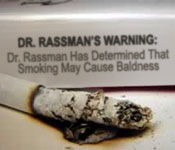Can you comment on the value of this chair to regrow your hair: article at KAKE.com

Pulse electric therapy has been around for years. It was first shown valuable in the treatment of bones that did not heal (malunions/nonunions). Initially, electrodes were placed into the ends of the bones when they failed to heal. The treatment worked well in these patients and eventually the electrodes were placed outside of the bones to create an electric field around the poorly healing bones. That also worked. Now the treatments have been approved for wound healing and somebody will soon test it for hair regrowth. There is a different process going on in people treated for cancer who lost their hair, then people who have male pattern balding. As of this time it is clearly not evident that any benefits can be had by the typical balding man.
Below are a wide range of applications for those interested in seeing the various claims for this therapy. I have researched some of them up for the blog readers…
- Cigna (PDF file)
- Hoovers
- Curatronic.com
- StrokeDoctor.com
- HealingTherapies.info
- Earthpulse.net – Depression
- Earthpulse.net
- Pulse-Magnetic-Therapy.com


 It is well known that smoking and tobacco products have adverse health effects. Nicotine in tobacco products are known to constrict blood vessels. This could lead to poor circulation and possible hair loss. To see this effect (of poor circulation) squeeze your nail bed until it turns white and see how quickly it returns to its natural pink color (it should be under 2 seconds). Compare the time difference after smoking a cigarette. You will see that the blushing time changes. Some hair transplants surgeons feel strongly that the effect of nicotine on scalp circulation is reduced more significantly when a hair transplant is done, leading to poorer growth of the grafts and less than idealized results.
It is well known that smoking and tobacco products have adverse health effects. Nicotine in tobacco products are known to constrict blood vessels. This could lead to poor circulation and possible hair loss. To see this effect (of poor circulation) squeeze your nail bed until it turns white and see how quickly it returns to its natural pink color (it should be under 2 seconds). Compare the time difference after smoking a cigarette. You will see that the blushing time changes. Some hair transplants surgeons feel strongly that the effect of nicotine on scalp circulation is reduced more significantly when a hair transplant is done, leading to poorer growth of the grafts and less than idealized results.